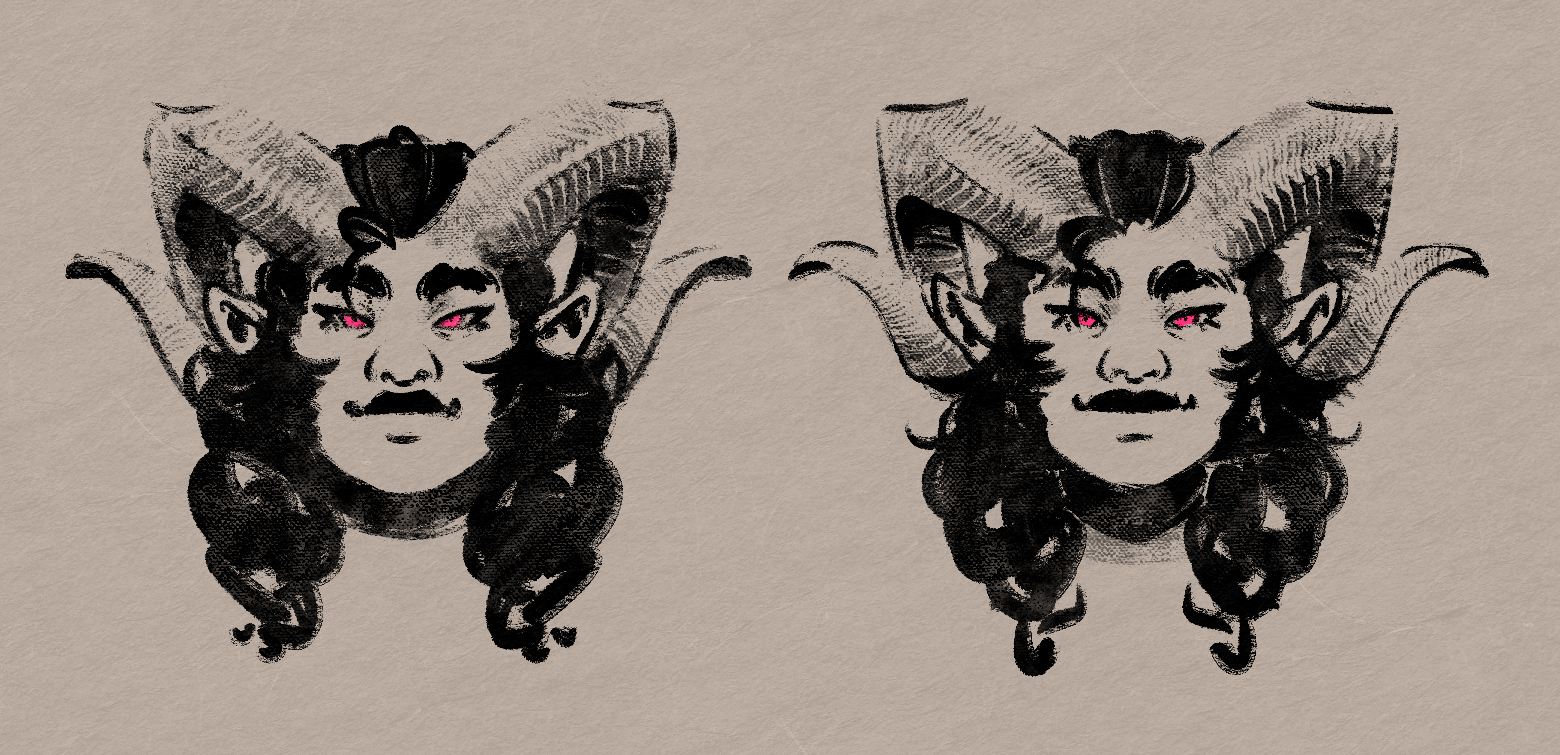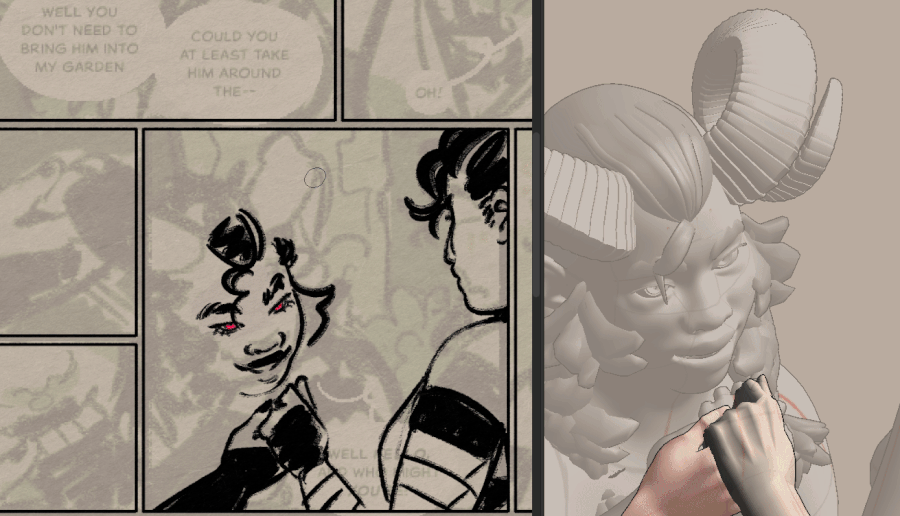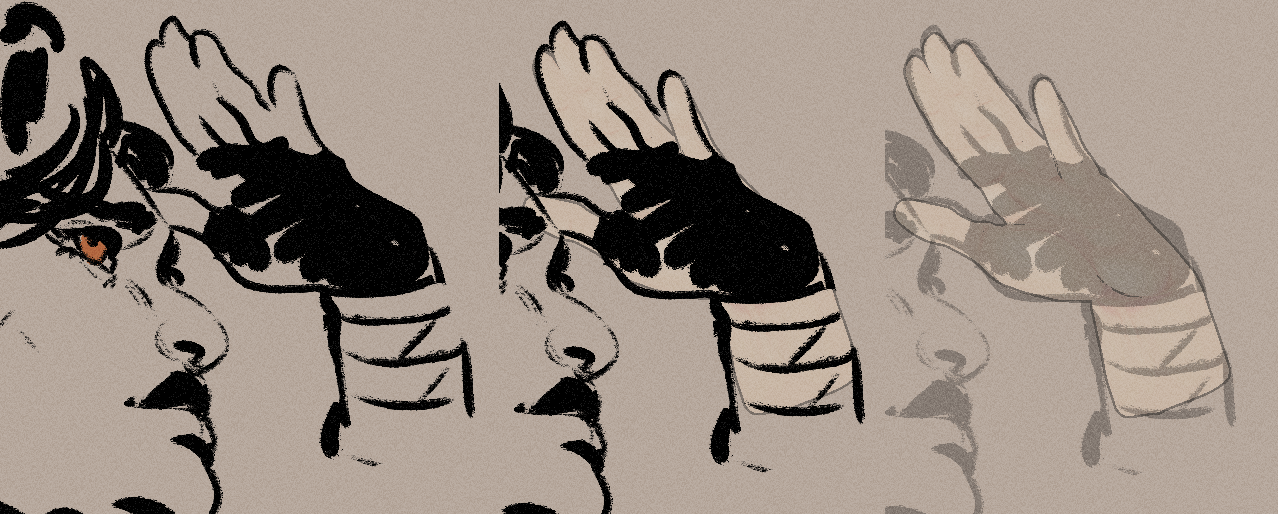EDIT Jan 2025: This post has gotten a little bit of a face lift! I waffled rather a lot in the original version, I've tried to make things a bit more concise, and better structured.
Before I get into this post, one reason that people feel hesitant to use them in their work is a belief that it is "cheating" to do so.
So I would like to say that there is no such thing as "cheating" in art, if everything you are doing is with things you have permission to use you are breaking no rules and simply using the tools you have available to you.
Yes indeed, this includes things like tracing! If you take your own photos or use ones that are licensed to you, for example, you are well within your rights to trace them. And tracing can in fact be a valuable tool for learning, there's a wonderful post by tumblr user prrb that explains how to do this that you can find here.
The same applies to 3D models, if it is a model you have permission to use or that you created yourself, you are breaking no rules by drawing on top of it and ergo you are not cheating anyone.
So delete the thought of cheating from your mind! The great painters of old had real life models pose for them and they set up references for the scenes they wanted to paint with whatever they had available. References are a healthy part of making art, and 3D models allow you to set up your own references for even the most fantastical things, so don't be afraid to use them if you think they'd help!
I use clip studio paint for my art, which has a special kind of layer called a 3D layer which allows you to import 3d model files and rotate and, should they be rigged, pose them freely on your 2D drawing canvas:

3D models get a lot of bad rap. A poorly integrated 3d model can stick out like a sore thumb, and blindly tracing over a model can result in a stiff and lifeless piece. But, for someone like myself who is disabled and has very low stamina for art before the chronic pain kicks in, 3D models allow me to thumbnail and draft pieces without having to redraw things over and over, saving both valuable time and allowing me to reiterate with minimal strain on my joints!
Some people don't care if it's obvious there was a 3d model used in the creation of a piece—and in that case this post is not for you! Continue what you're doing haha.
But if this does matter to you, seamlessly integrating a model into your art is difficult for two reasons—firstly, a 3D model cannot make up for knowledge and skills you do not already have, and secondly what reads well as a 3D model or indeed a photo does not necessarily translate well to a flat 2D drawing.
You need to put a lot of care into your framing, posing, and the overall silhouette and shapes you create with the model in order for it to translate well into 2D and not lose readability. This is a skill that has to be developed and takes practice! But the more thoughtful you are, the more you'll get out of it.
To elaborate, allow me to give you some examples. I've a lot of characters who are demons and many have complex twisting horns that are rather difficult to draw at different angles, so I frequently use 3D models to assist in drawing them. Take Debauchery here:

The answer matters not*, because the important part is that even without using a model, I know how to draw Debauchery's horns. However, there are angles that give me trouble, so the 3d model helps me to figure out the proportions and placement! This is a very simple angle for me to draw being that it is straight on and symmetrical, but the difficulty comes when she starts to turn her head... At which point, the model helps me to get the placement right.


Doing this trains your brain to see things more accurately, and also highlights your shortcomings so you can learn from them! Which means you'll get better at drawing that subject without the reference. I especially recommend you do this if you have been trying to trace the subject and the results have looked off. That indicates you have a lack of understanding of the subject and don't know how to draw it.
With complex subjects you're unfamiliar with, try and remember how to describe simple shapes like cubes, cylinders, toruses, and spheres and so on with your mark making, and break down whatever you're drawing into these shapes so you can better draw them.
* (the answer is the left was freehand and the right was model assisted)
For another example, you could use a 3d model of a hand in your work for reference. But without a solid understanding of anatomy, posing, and shape design, you may find that using a model makes the hands you draw feel stiff and unnatural, and that when looking at them in comparison to hands you've drawn freehand, it's really obvious that they were drawn based on a 3D model.
This happens due to a lack of understanding of the model subject. If you don't know how hands move and how to pose them well and create good shapes with these poses, then naturally the model will lack dynamism and its shaping will be lacklustre, so when you draw over the top of that the resulting drawing will become stiff and unnatural.

Don't be hasty! Take your time setting up the models.
For specific advice on drawing hands, I wrote an entire post about that which you can find here, I think it would be a good read to read in conjugation with this one as I give insight into my thought process when it comes to posing and shape design.
All the advice I give in that post is just as relevant to posing a 3D model, as ultimately at the end of the day, you are still creating a 2D image and the 3D model is a tool to assist you in creating it. The 3D model should always be in service of the final 2D image, and you should be thinking about the 2D image you're trying to create, not the 3D one!
I honestly don't think of using 3D models as much of a shortcut, really. They make it much easier to iterate without committing to anything in any specific way, which I find is incredibly useful for thumbnailing and planning out compositions and trying different shots and ways of framing them (I make comics), and they are a useful tool for maintaining consistency and keeping characters "on model" (again, I make comics), but posing things well and creating a clear silhouette takes time and deliberation, and you still have to draw the final image itself. They're less of a shortcut as they are an alternative approach to working, in my opinion, and thinking about them like this helps you to use them effectively.
Which reminds me, you should not feel beholden to the model as you work. It's there to assist you, but you are still the one who makes the final mark making decisions and determine where and how you place the lines or shapes that describe the subject!

I also highly recommend making your own 3D models. Pretty much all the models I use are my own (though the hand model shown is one that used to be available on the CSP asset store—sadly, the creator took it down so I am unable to share it), and the biggest advantage I feel in making your own models is that through the act of creating it alone, you deepen your understanding of the subject in a 3D space.
You spend so long with the subject in the modelling software that you naturally build up a mental library of how it exists in that space, making it considerably easier to rotate it around in your brain like a microwave. Which in turn, makes them easier to draw even before you bring the model into CSP!
I don't have any specific recommendations for getting into 3D modelling, unfortunately. I very clunkily taught myself over the space of a few years and eventually fell into better practices over time, but I have watched a number of Grant Abbitt's videos and found them to be accessible and helpful, so while I haven't watched the specific series I'm fairly confident that his Learn Blender 3 For Complete Beginners series is likely to be a good place to start! And if it doesn't click, there's many other introductory series out there on youtube, Blender is a very accessible program to get started with as lots of people are eager to teach you how to use it and make it so.
In anycase, those are all the thoughts I have to share. I hope that all makes sense, and I hope the other posts linked are equally helpful.
I also have many other posts like these available here on my website for free, though if they're helpful you're welcome to leave me a tip via my ko-fi (or perhaps pick up something from my store, like my brushes or the models that I release)!
Thank you for reading, and best of luck with your work ♥



No comments yet!